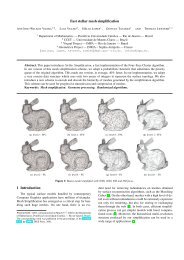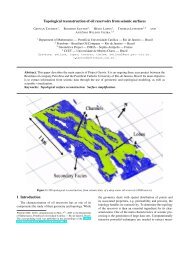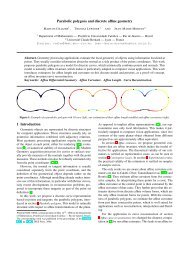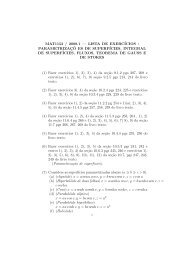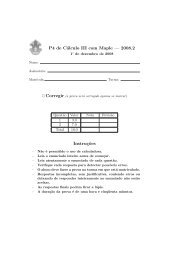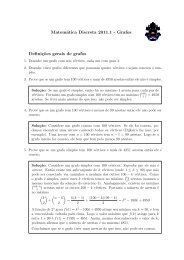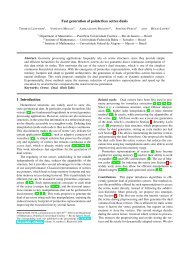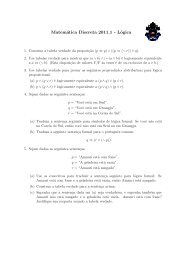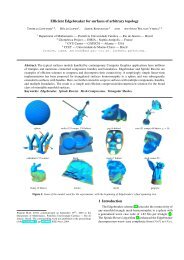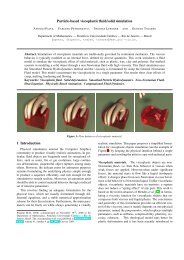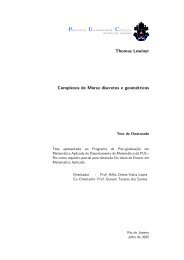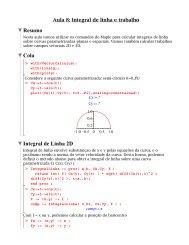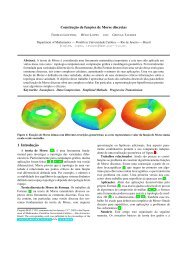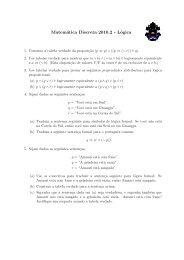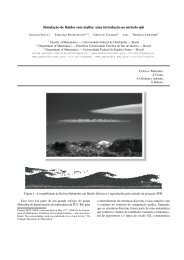Particle-based non-Newtonian fluid animation for melting ... - PUC-Rio
Particle-based non-Newtonian fluid animation for melting ... - PUC-Rio
Particle-based non-Newtonian fluid animation for melting ... - PUC-Rio
You also want an ePaper? Increase the reach of your titles
YUMPU automatically turns print PDFs into web optimized ePapers that Google loves.
A. Paiva, F. Petronetto, T. Lewiner and G. Tavares 6<br />
(a) Initial object.<br />
(b) 390 iterations.<br />
(c) 800 iterations.<br />
(d) 2000 iterations.<br />
Figure 6: Melting of the SIBGRAPI logo using 12900 particles, starting cold at the bottom and hot at the top. The adaptive time step allows<br />
an accurate simulation with few iterations.<br />
Attribute Description<br />
x<br />
position<br />
v<br />
velocity<br />
a<br />
acceleration<br />
D<br />
de<strong>for</strong>mation tensor<br />
ρ<br />
density<br />
η<br />
viscosity<br />
T<br />
temperature<br />
Table 1: <strong>Particle</strong> attributes.<br />
This adaptive time step allows reducing the number of iteration<br />
while maintaining accuracy (see Figure 6).<br />
(b) Neighbors retrieval<br />
In contrast with grid-base methods, where the positions<br />
of neighboring grid-cells are well defined, the neighbors of<br />
a given particle in the SPH method can vary with time.<br />
An adaptive hierarchy tree search [7] is adopted to find the<br />
particle neighbors.<br />
The tree search method splits recursively the problem<br />
domain into octants that contain particles, until the leaves<br />
on the tree has a maximum particle number (we use at most<br />
ten particles <strong>for</strong> each leaf). After the tree structure is built,<br />
the search process can be per<strong>for</strong>med.<br />
For a given particle i, a cube with side 6h centered at<br />
x i is used to enclose the particle. We check at each level<br />
of the tree if the cube intersects the tree nodes containing<br />
the particles. If they do not intersect we stop the descent<br />
down on that particular path. If they do intersect we go to<br />
The corresponding work was published in the proceedings of the Sibgrapi 2006, pp. 78–85. IEEE Press, 2006.



